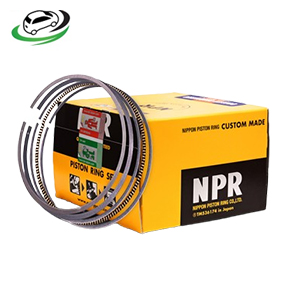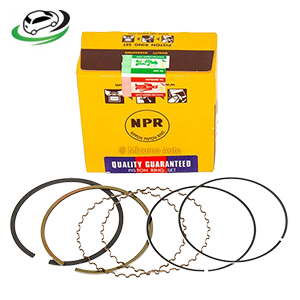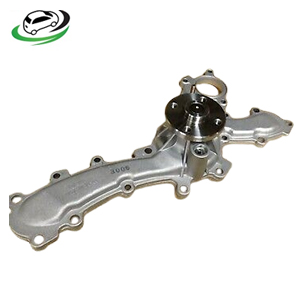-6%
Get Engine Water Pump Assy For 2GR-FSE/ 4GR-FSE/ 3GR-FE/ 2GR-F/ 5GR-FE Engines T-161
The engine water pump assembly is a crucial component of a vehicle’s cooling system, playing a pivotal role in maintaining optimal engine temperatures. This guide will explore the function, types, benefits, signs of wear, maintenance, and replacement of the engine water pump assembly in detail, providing a comprehensive understanding of its importance in vehicle operation.
Function of the Engine Water Pump Assembly
The primary function of the engine water pump is to circulate coolant (a mixture of water and antifreeze) throughout the engine and the radiator. This circulation is essential for the following reasons:
1. Cooling the Engine
- The engine generates significant heat during operation, which must be dissipated to prevent overheating. The water pump facilitates the flow of coolant through the engine block and cylinder head, absorbing excess heat and preventing engine damage.
2. Regulating Engine Temperature
- By circulating coolant through the engine, the water pump helps maintain a consistent operating temperature. This regulation is critical for optimal engine performance and efficiency.
3. Heat Exchange with the Radiator
- The coolant flows from the engine to the radiator, where it releases absorbed heat into the atmosphere. The water pump ensures that coolant continuously circulates between the engine and the radiator, facilitating effective heat exchange.
4. Supporting Heater Core Function
- The water pump also provides coolant to the heater core, which is responsible for heating the cabin of the vehicle. This is especially important in colder climates, where a functional heating system is necessary for passenger comfort.
Types of Engine Water Pumps
Engine water pumps come in various designs and configurations, primarily categorized into two types: mechanical and electrical water pumps.
1. Mechanical Water Pumps
- Operation: Mechanical water pumps are driven by the engine’s crankshaft via a belt or chain. As the engine runs, the pump’s impeller rotates, drawing coolant from the radiator and pushing it through the engine.
- Design: Typically, mechanical water pumps feature a housing, an impeller, and a shaft. The impeller is designed to create a flow of coolant, while the housing protects the components and connects the pump to the cooling system.
2. Electric Water Pumps
- Operation: Electric water pumps are powered by an electric motor rather than being mechanically driven by the engine. This allows for more precise control of coolant flow and improved efficiency.
- Applications: Electric water pumps are increasingly used in modern vehicles, particularly in hybrid and electric models, where efficiency is critical. They can be activated independently of the engine, allowing for enhanced cooling performance during specific driving conditions.
Benefits of a Functional Engine Water Pump Assembly
A properly functioning water pump assembly offers numerous advantages that contribute to the overall health and performance of a vehicle’s engine:
1. Prevention of Overheating
- By effectively circulating coolant, the water pump prevents the engine from overheating, which can lead to severe damage, such as warped cylinder heads or a blown head gasket.
2. Improved Fuel Efficiency
- Maintaining optimal engine temperatures contributes to better fuel efficiency. An engine that runs too hot or too cold can lead to increased fuel consumption and emissions.
3. Enhanced Engine Performance
- A well-functioning water pump ensures that the engine operates within its ideal temperature range, promoting smooth performance and responsiveness.
4. Extended Engine Life
- Proper cooling reduces wear and tear on engine components, ultimately extending the life of the engine and reducing the likelihood of costly repairs.
5. Effective Cabin Heating
- For vehicles equipped with a heating system, a functional water pump ensures that the heater core receives adequate coolant, providing warmth and comfort for passengers during colder weather.
Signs of a Failing Engine Water Pump
Over time, water pumps can wear out or become damaged, leading to various issues. Some common signs of a failing water pump include:
1. Overheating Engine
- If the engine temperature rises above normal levels, it may indicate that the water pump is not circulating coolant effectively.
2. Coolant Leaks
- Puddles of coolant under the vehicle or a noticeable drop in coolant levels in the reservoir can indicate a leak in the water pump or its connections.
3. Unusual Noises
- A failing water pump may produce grinding or whining noises, indicating that the bearings are worn or the impeller is damaged.
4. Dashboard Warning Lights
- Many modern vehicles are equipped with temperature warning lights. If this light illuminates, it may indicate that the water pump is not functioning correctly.
5. Poor Cabin Heating
- Inadequate heating in the vehicle’s cabin during operation may be a sign that the water pump is not supplying coolant to the heater core effectively.
Maintenance of the Engine Water Pump Assembly
Regular maintenance can help extend the life of the engine water pump and prevent premature failure. Here are some key maintenance tips:
1. Coolant Replacement
- Regularly check and replace the coolant according to the manufacturer’s recommendations. Old or contaminated coolant can lead to corrosion and wear on the water pump and other cooling system components.
2. Inspect for Leaks
- Periodically inspect the water pump and surrounding areas for signs of coolant leaks. Early detection can prevent more significant issues down the line.
3. Check Belts and Hoses
- Ensure that the drive belt (for mechanical pumps) and hoses connected to the water pump are in good condition. Replace any worn or damaged components to prevent water pump failure.
4. Listen for Unusual Noises
- Pay attention to any unusual noises coming from the engine bay. If you hear grinding or whining sounds, it may be time to have the water pump inspected.
5. Follow Manufacturer Guidelines
- Adhere to the vehicle manufacturer’s service recommendations for water pump inspection and replacement intervals. This will help ensure optimal performance and longevity.
Replacement of the Engine Water Pump Assembly
When a water pump fails, it will need to be replaced. Here are the general steps for replacing an engine water pump:
1. Gather Tools and Materials
- Before starting the replacement, gather the necessary tools, including wrenches, a socket set, pliers, a coolant catch pan, and a new water pump assembly.
2. Drain Coolant
- Place a coolant catch pan under the radiator and drain the coolant from the system. Follow the manufacturer’s guidelines for draining procedures.
3. Remove Components
- Depending on the vehicle, you may need to remove various components to access the water pump. This may include the radiator hoses, drive belts, and sometimes the timing cover or timing belt.
4. Remove the Old Water Pump
- Unbolt the old water pump from the engine block and carefully remove it. Clean the mounting surface to remove any old gasket material or debris.
5. Install the New Water Pump
- Position the new water pump in place and secure it with bolts. Ensure that any gaskets are properly seated to prevent leaks.
6. Reassemble Components
- Reinstall any components that were removed during the process, including hoses, belts, and other parts. Make sure everything is tightened according to specifications.
7. Refill Coolant
- Refill the cooling system with the appropriate coolant mixture. Start the engine and let it run for a few minutes, checking for leaks and ensuring that the coolant circulates properly.
8. Test Drive
- After the installation, take the vehicle for a short test drive. Monitor the engine temperature and check for any signs of leaks or unusual noises.
Conclusion
The engine water pump assembly is a vital component of a vehicle’s cooling system, responsible for circulating coolant to regulate engine temperature and prevent overheating. By understanding its functions, types, benefits, signs of wear, maintenance, and replacement procedures, vehicle owners can ensure the longevity and efficiency of their engines. Regular maintenance and prompt attention to any signs of failure are essential to keep the water pump and cooling system in optimal working condition. By doing so, you can enjoy improved engine performance, extended vehicle life, and a comfortable driving experience.
Follow us on Facebook for more parts.






Reviews
Clear filtersThere are no reviews yet.